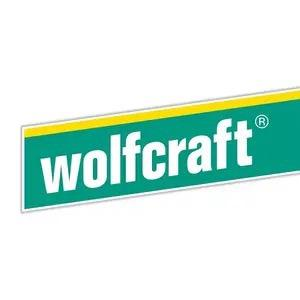Search
1/9
£21.99
wolfcraft Dowelmaster, Dowel Gauge for Wood Joints with Ø 6, 8, and 10 mm Dowel Pins
Sold by wolfcraftuk
5(3)
24 sold
Select options
Select
Shipping
£2.50
Customer reviews (3)

u**2
Item: Default
1 March 2025

d**r
Item: Default
Good
9 January 2024

L** B**l c**t
Item: Default
24 December 2024
For more info on customer reviews, read ourTikTok Shop UK/EU Customer Review Policy.

wolfcraftuk
35 items
Shop performance
Better than 88% of other shops
4+ star rating
100%
Product description

wolfcraft Dowelmaster, Dowel Gauge for Wood Joints with Ø 6, 8, and 10 mm Dowel Pins

With the dowelmaster from wolfcraft, you can make perfect dowel joints at the first go even without previous knowledge. Align drill holes for corner, T-butt and edge-to-edge joints without any errors using the adjustable stop, three integrated drill guide bushes for round dowel pins and two centring bolts. The high-quality, impact-resistant plastic design and the steel drill guide bushes for 6, 8 and 10 mm dowel pins ensure outstanding stability and high durability. With its ergonomically shaped handle, the dowel-master rests comfortably in the hand, making it a fast drill gauge for almost every work situation.

•Face drill holes and edge-to-edge joints: Adjust the drill bit depth stop to the board thickness and dowel length (you do not need additional tools for this). Place the dowel-master on the face edge of the board and secure it between the two centring bolts. Now you can drill into the exact centre of the face side of the board. For edge-to-edge joints, clamp both boards to the workbench. Push the dowel-master with the guide slot over the inserted dowel pin in the first board and drill through the bush.
•Corner joints: For corner joints, start by drilling all the holes in the face side as described above. Glue the dowel pins into the face holes and then adjust the stop of the dowel-master to them. To do this, guide the dowel pin into the appropriate bush, align the stop with the side of the board and secure the position using the adjusting screw. Then lay the face board on the undrilled board. The dowel-master accommodates the dowel pin in the guide slot. You can start drilling once the stop is seated firmly against the lower board edge.
•T-butt joints: The Wolfcraft dowel-master makes short work of T-butt joints too. Once you have drilled the first board on the face side and the dowel pins are firmly glued in place, start working on the counterpart. Draw the middle of the bottom on the sideboard and clamp the bottom with the already glued dowel pins 4 cm away from this line. Push the dowel-master with the correct guide slot over the dowel pin and drill through the bush on the top of the dowel-master. Now the boards are ready to be glued.

Properties:
•drilling template with three guide slots arranged at right angles and drill guide bushes for properly aligned dowel holes
•special geometry for edge-to-edge, corner and T-butt joints
•adjustable stop with fixing screw for exact alignment with the workpiece without the need for tools
•high-quality plastic design and steel guide bushes for stability and durability
•ergonomically shaped handle and high clamping force for comfortable use
•versatile, can be used for boards with a thickness of 12-30 mm

Tool area: for 6, 8 and 10 mm dowel pins and for boards with a thickness of 12–30 mm

Box contains: wolfcraft Dowelmaster – dowel gauge for wood joints
Explore more from wolfcraftuk
 4.9230sold£12.00£20.00
4.9230sold£12.00£20.00

No more products
Open TikTok
































